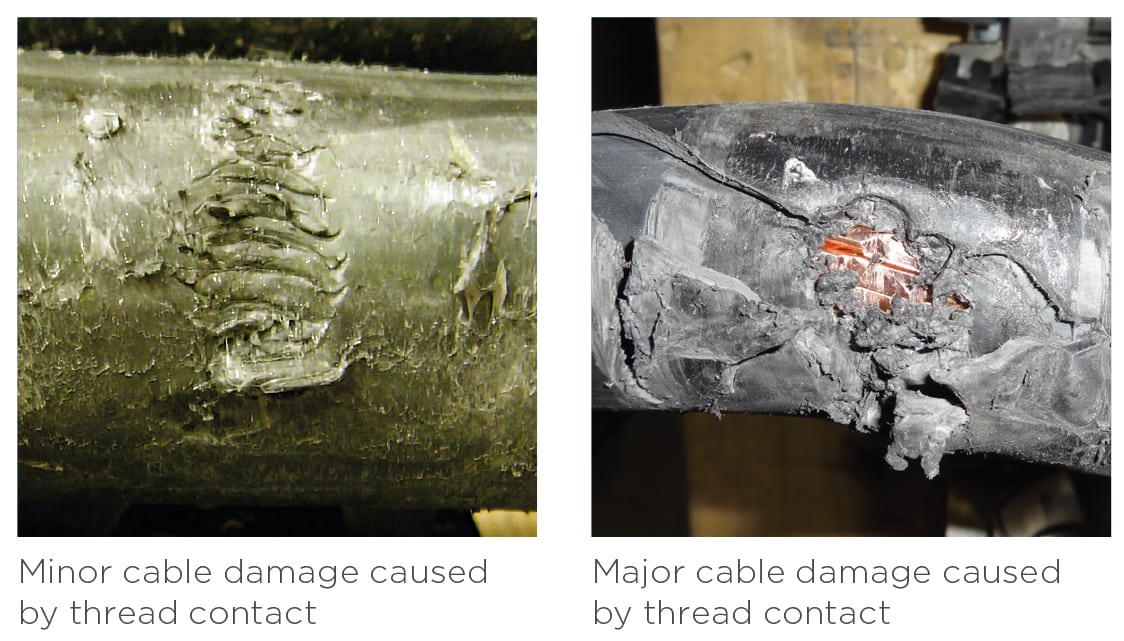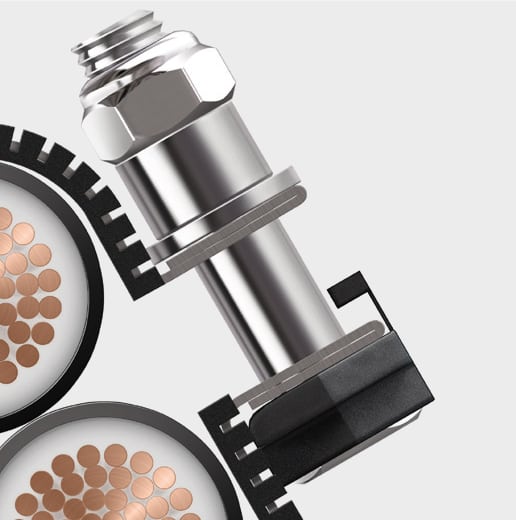- Home
- Cable Cleats for Electrical Installations
- Technical
- Cable Cleat Nut Spacer
- Certificate Downloads
- Cable Cleat Accessories
- Cable Cleat Nut Spacer
- Cable Cleat Selection
- Cable Formations
- Recommended Cleat Spacings
- Catalogue Downloads
- Cleat Fixing Packs
- Fire Performance
- Galvanic Corrosion
- Good Installation Practices
- How To Order
- Intermediate Restraints
- Materials
- Product Downloads
- Product Overview
- Resistance Classifications
- Twin arc profiles
- What is a Cable Cleat?
- What is a Short Circuit?
- Why use a Cable Cleat?
Need more help? Contact our team on +44 191 265 7411
Cable Cleat Nut Spacer
Industry-wide, a fully threaded bolt is used as standard to ensure that the cable cleat can accept a range of cable diameters. However, the use of a fully threaded bolt can lead to damage to the cables during high short circuit fault conditions.
The cable cleat nut spacer from CMP Products comes as standard with cable cleats designed to withstand high circuit fault conditions. The nut spacers are designed to ensure the cable never comes into contact with the threaded portion of the cable cleat closure bolt during
high circuit fault conditions.
In over 300 short circuit tests which CMP Products has conducted on our cable cleat range, tremendous forces were generated by the cables during high short circuit conditions. It is during this stage that cables can expel away from each other and try to break the cable cleat restraining them. If any sharp edges, such as threads are exposed to the cables, there may be damage to the cable insulation and, depending on the peak fault, this can be catastrophic. Where the cable insulation is sufficiently damaged, earth shortages will occur, leading to a life threatening environment for any personnel in the vicinity.

The CMP spacer and bolt combination – one size fits all

CMP Products’ cable cleats use a partially threaded bolt in conjunction with the nut spacer, never allowing the cables to be exposed to the thread of the bolt. The use of these, along with cable cleat liners as standard, means the cables can only ever come into contact with smooth or flat surfaces.
The cable cleat can accept a range of cable diameters
